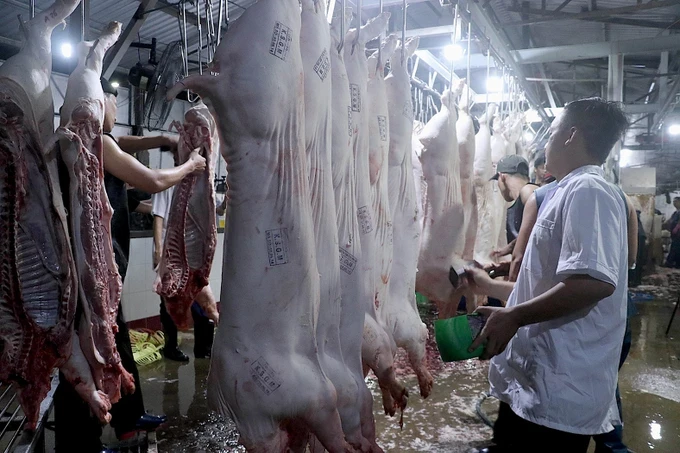
As Lunar New Year 2025 approaches, the demand for food, particularly livestock and poultry meat, is surging significantly.
In the Mekong Delta, the unlicensed and unsanitary slaughter of pigs, chickens, ducks, and birds is rampant meanwhile authorities and animal health agencies in many places have negligent behavior leading to increasing public concerns about food poisoning and disease outbreaks.
For instance, at Sa Dec Market in Dong Thap Province, live poultry such as chickens, ducks, and various bird species are often kept in close proximity to each other, with some stalls housing hundreds of birds daily. This practice raises concerns about potential disease outbreaks.
Furthermore, many vendors at these stalls offer on-site slaughtering services following customers’ demand.
Elsewhere in the Mekong Delta, on Mau Than Street of Can Tho City, there is also an illegal poultry trading and slaughtering house. Live poultry is also processed and displayed on the street without covering, with flies swarming around, not ensuring food safety. Its owner is willing to slaughter poultry at the request of customers.
Poultry trading houses along the National Highway 63 in U Minh Thuong District and the National Highway 80 in Kien Luong District of Kien Giang Province not only sell chickens and ducks but also trade and slaughter birds, wild animals such as porcupines, wild chickens, and wild boars openly.
Although responsible agencies in provinces such as Ca Mau, Bac Lieu, and Tra Vinh announced to tighten the control of livestock and poultry slaughtering activities near Tet conducted by the local veterinary sector, many customers bought pork without a quarantine stamp at many traditional markets and retail points near industrial parks.
According to the Department of Agriculture and Rural Development of Long An province, the average number of slaughtered animals in the province is about 6,162 pigs, 214 buffaloes and cows, and 84,355 poultry per day. Long An Province is currently home to 43 slaughterhouses.
With the aim to enhance the capacity of managing slaughter control activities, particularly during peak demand periods such as the end of the year and Lunar New Year, the government in Long An Province has implemented two key information technology applications within slaughterhouses which are expected to facilitate the management and control of post-slaughter animal products.
Furthermore, six other facilities now utilize these systems to print and issue quarantine certificates for the transportation of animal products.
At the same time, responsible agencies have taken heed of compliance with regulations on animal quarantine, slaughter control, transportation of animals and animal products. Above all, inspectors pay attention to the abuse of banned substances, growth stimulants, sedatives and those injecting water into the bodies of livestock before slaughter. They also advise on strict handling of violations according to the law.
Doan Dinh Toan, Head of the Disease Management Department said that with the recent outbreak of African swine fever in the locality, relevant agencies have strengthened inspection and supervision. As the Tet holiday is approaching, the demand for pork consumption is increasing, the authorities are strictly controlling means transporting pigs and pork products in and out of epidemic areas.
In preparation for the Lunar New Year, the Department of Agriculture and Rural Development in Ca Mau Province has launched a proactive initiative to ensure food safety. The province has set up an interdisciplinary inspection team 2419 who will pay unregular visits in 16 days. Inspectors will drop by transportation establishments, production facilities, business establishments, and animal slaughterhouses.
In addition to scheduled checks, the team will carry out unscheduled inspections based on directives from higher authorities and public feedback. Deputy Director Chau Cong Bang, who leads the inspection team, has pledged strict enforcement of food safety regulations.
According to Deputy Head Nguyen Dinh Xuyen of the Department of Animal Husbandry and Veterinary Medicine of Kien Giang Province, the province currently has 44 concentrated slaughterhouses for livestock and poultry. Veterinary staff of each slaughterhouse work hard to supervise the slaughtering process and ensure the quality of input and output food. The facilities have made a commitment to producing and trading safe food. Waste during the slaughtering process is treated according to the present regulations.
























